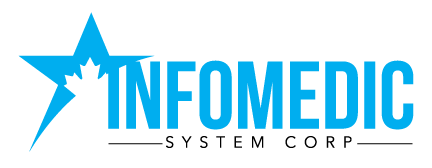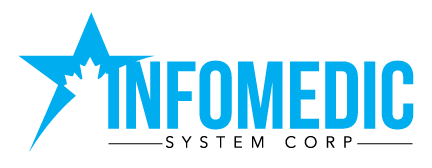
By: Bhavin Shah, MD HealthIT Professional, Published on Mon Jan 25 2016
Frequently, clinical managers/owners grapple with tough EMR decisions. Age old questions that stem from solo clinics to enterprise private hospitals include: “Why OSCAR EMR?” and “who is Infomedic?”
Managers and physician owners find themselves sleeplessly up all night thinking about which EMR provider to utilize and whether the financial burden is justified. Infomedic has heard the battle cries of clinical managers and created this “INFO blog”. Our vision is to bring some organization to the decision models currently being used when choosing an EMR. We would also like to alleviate and eliminate any misconceptions about the entire EMR decision making process and make it as simplified as possible. Let us assist you on your journey as your clinic transitions from paper to digital.
The following is the first part of our 3 part series on why some physicians are choosing OSCAR EMR over other systems after they question themselves for countless nights.
Software Flexibility. OSCAR EMR is open source software that is continually in development and maintained by McMaster University and supported by a very large OSCAR User Community. The OSCAR User Community, along with its database of thousands of free EMR templates and eforms, can be found here: http://oscarcanada.org/. The OSCAR user community engages OSCAR McMaster developers by requesting feature changes (e.g. integrate an encounter timer on the encounter note, integrate new methadone module) to make the software more user friendly and increase user experience (UX). In an agile project management model, OSCAR is continually changing for the better with the help of all the talented OSCAR developers. Feature Change Requests migrate through a vetting process and eventually get added into subsequent stable releases of certified OSCAR offerings by all Approved OSCAR EMR Service Providers (OSP). The community can also post up their own source code to have it checked by the OSCAR development team. This kind of software flexibility is unparalleled in the EMR world and will be the future of all software. The point of the software flexibility allows individuals to bring their EMR ideas to life to innovate new and improved modules.
OMD Funding Eligible Solution. Subsidize OSCAR EMR by partnering up with OntarioMD (OMD). Infomedic offers an OSCAR EMR solution that can be subsidized by OMD’s EMR adoption program. For our OSCAR system to be OMD certified, Infomedic guarantees and maintains specific service levels and response times (e.g. 15min for emergency issues) that are outlined by OMD, in addition to setting up each clinic with their own physical on-site server. This allows Infomedic to offer specific levels of customer server, system integrity and product quality.
Price. OSCAR EMR is open source thus making it the most cost effective solution in the market. The world still has not fully adopted the idea behind open source projects and just like Tesla Motors, OSCAR and its user community will outpace the development cycles of any proprietary software company in the healthcare IT world. Harnessing the collective minds of healthcare software developers to constantly create new and improved modules will be the new “norm” within the EMR industry. Additionally, from a hardware perspective, OSCAR requires less hardware resources then most EMR’s in the market. In most cases a mid size office server is sufficient to run an OSCAR instance. OSCAR is easily manageable by a clinics IT team for minor issues (with proper training), thus reducing more bottom line costs.
No Lock In. Why allow another company to dictate how and when you want to change EMR providers? Get the freedom you deserve, its your clinic.
Data Mobility. The clinic owns the data, always. Patient and EMR data is saved in such a way that it can easily be extracted and migrated over to another OSCAR Service Provider or another EMR with a click of a button at no additional costs. A misconception that many clinic managers make (probably because many vendors perpetuate the hurdles in migrating one system to another) is that migration costs are astronomical and that its impossible to transfer one systems data to another. Data migration is not difficult! “Moving one system to another”, is simply moving data tables within one system to the data tables to another system. All data tables are in the same xml, html, sql, excel format therefore migration is not as painful as it sounds. Infomedic data architects do this for a living and enjoy the entire migration process.
Scalability. OSCAR is so well programmed it utilizes hardware resources in such a way that it has the ability to scale up to 1000 concurrent physician users with 500K patient files on a single instance on a medium to high grade, 8 core business server without experiencing any noticeable lag.
SLA and Resources. OSCAR EMR Service Level Agreements are the best in the market. Our help desk, tech team, architect team and engineers are always ready to help at a moments notice. High priority issues will be responded to with 15 min of either a phone call, email or ticket 24/7.
Local. We are located at 700 Markham Rd., in the heart of east Toronto. Many clinical managers look over this key component when deciding who to choose as their EMR specialists. Infomedic is locally based and extremely flexible, meaning that our technicians can physically attend to clinics, if necessary, to fix issues that require hands on work, just like the geek squad from best buy. This adds to our customer service profile and puts many clinic managers anxieties at ease.


